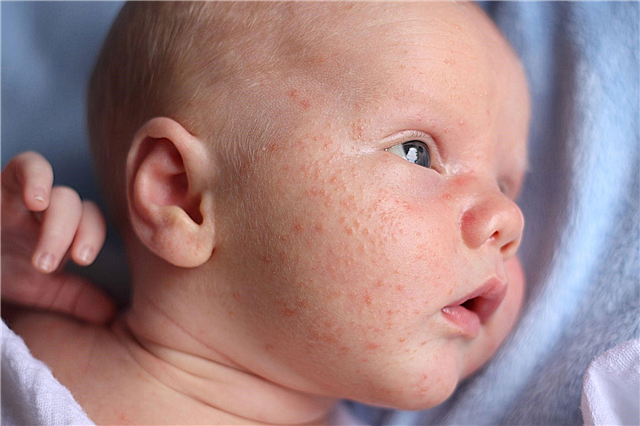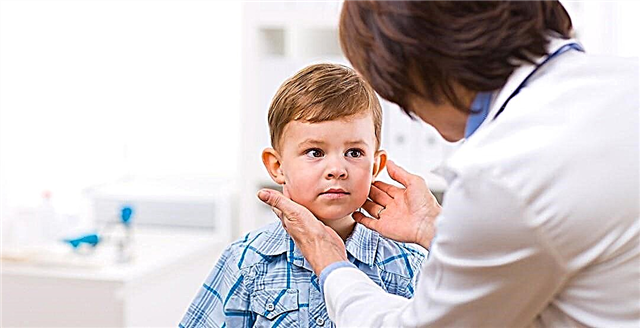Our colon is a vital part of the digestive system, and without it, we cannot naturally process foods and remove waste and toxins from our bodies. In some children, one of the sections of the large intestine is enlarged in length, which makes it difficult to empty it. Next, we will consider the symptoms of this pathology, called dolichosigma, and describe some of the treatment methods.
In childhood, constipation is a common problem; it is usually associated with the child's diet and goes away after some time. But if the difficulty of the act of defecation occurs regularly, it is worth taking this problem more seriously. This manifestation is a symptom of a number of diseases. Dolichosigma is one of these pathologies.
Dolichosigma is a structural anomaly of the sigmoid colon. With this pathology, the sigmoid colon is lengthened, but its lumen does not change in diameter, and the walls do not become thicker.

Epidemiology
Epidemiological data on dolichosigma are as follows:
- in 80% of cases, dolichosigma in children is caused by the termination of neuronal migration in the intestine and a violation of innervation;
- asymptomatic and not bothering patients, the disease is diagnosed in 15% of people;
- intestinal damage along the entire length occurs in 1% of victims;
- among newborns, only 1 out of 5000 children have this pathology;
- the disease is 4 times more common in boys;
- family history of the disease occurs in 7% of cases;
- in 3 - 5% of victims, the pathology is associated with malformations, for example, Down's syndrome.
The reasons for the development of dolichosigma
The exact reasons for this anomaly have not yet been identified. Sometimes congenital pathology is the result of exposure to radiation, toxins, various chemical and physical factors during intrauterine development. Dolichosigma can also develop if a woman has suffered an infectious disease during pregnancy. The correct development of the fetus can interfere with the use of certain medications by a pregnant woman.
Acquired dolichosigma in children is rare. The reasons will be as follows:

- long constipation, fermentation and putrefaction in the intestines after prolonged dysbiosis or prolonged infection, frequent food poisoning;
- violation of intestinal motor activity due to a sedentary lifestyle;
- excessive consumption of meat products, carbohydrate diet;
- persistent nervous tension and stress.
The mechanism of development of the disease and its manifestations (pathogenesis)
Congenital or acquired increase in the length of the sigmoid colon underlies the pathogenesis. If there are concomitant pathologies, fibrosis of the intestinal tissue often occurs, as a result, the connective tissue replaces the normal intestinal tissue. Hyperemia and swelling appear. Muscle fibers grow, as a result of which the intestinal walls are abundantly saturated with tissue fluid.
All this disrupts intestinal contraction and weakens its tone. A decrease in contraction processes makes it difficult for feces to pass through the intestine, as a result of which constipation develops. Due to the constant presence of feces in the intestine, the innervation of the cells is disturbed, congestion, pain and intoxication develop.

Symptoms
Symptoms occur as the intestines fill up with feces and the development of intoxication of the body. The severity of the disease is directly proportional to the degree of morphological and functional disorders in the intestine.
In comparison with other pathologies of the gastrointestinal tract, dolichosigma is represented by vivid characteristic symptoms. Here are a few of them:
- sick children have constipation for many days. With its progression, the desire to defecate is suppressed, the stool masses become denser. Thick stool often causes damage to the rectal mucosa, so blood appears during the act of defecation. In severe cases, it becomes impossible to empty the bowel without an enema;
- pain with dolichosigma is localized in the navel and is spasmodic in nature. Painful sensations arise on the left side and disappear immediately after the act of defecation;
- this pathology also causes severe flatulence, persistent bloating and rumbling;
- persistent constipation leads to intoxication of the body, therefore, the child experiences weakness and nausea, appetite disappears, and the skin becomes gray, a rash appears on it. Urinary incontinence is possible.
Sometimes the anomaly is completely asymptomatic, it is discovered by chance either during a routine preventive examination, or during a diagnostic study associated with another gastrointestinal problem. But, as a rule, the symptoms mentioned above arise and bring serious discomfort to a sick child.

Features of dolichosigma in young children
A child with dolichosigma becomes lethargic, capricious, he cries all the time and refuses to eat. The main symptom is constipation with a gradually increasing frequency. Usually this is due to the transition to mixed feeding or the introduction of complementary foods, which entails a change in the consistency of feces and an increase in its amount.
Most affected children have functional disorders of other parts of the gastrointestinal tract: diverticular disease, colitis, dysbiosis, pancreatitis, biliary dyskinesia, chronic gastroduodenitis, etc.
Stages
There are three stages of abnormal lengthening of the sigmoid colon.
| Stage name | Characteristic |
| Compensatory | Constipation occurs periodically, lasting about 3 days. There may be abdominal pain. Compliance with a special diet and taking light laxatives will restore evacuation functions. |
| Subcompensatory | Persistent constipation occurs in combination with abdominal pain and severe flatulence. Laxatives cannot restore evacuation functions. Bowel emptying is achieved by using a cleansing enema. |
| Decompensation | Constipation lasts more than a week. Severe abdominal pain is present. Fecal impaction causes an increase in the size of the large intestine. Intoxication develops, loss of appetite occurs, nausea appears, and a feeling of malaise in general. An exclusively siphon enema will help to empty the intestines. In an advanced case, intestinal obstruction develops, complications. |

The sigmoid colon is often enlarged in length during childhood, and the stable progression of the disease over time leads to severe complications.
Colonoptosis
This is a prolapse of the transverse colon. It occurs most often due to a defect that has developed in utero.
It is characterized by stagnation of fecal masses, persistent constipation, nausea and vomiting are also present. The pressure can damage the bladder. The right side becomes inflamed more often, but the adjacent organs are involved in the inflammatory process. Without treatment, intestinal obstruction develops.
Colitis
This is an inflammation of the intestinal mucosa. With dolichosigma, colitis occurs against the background of a lack of stool for many days, since fecal masses do not come out and accumulate in the intestine. All this leads to the production of toxins, the development of intoxication, irritation of the intestinal walls. The mucous membrane swells, there is hyperemia (excessive blood flow into the vessels of the organ), irritation. The faeces become dark in color and offensive.
Dolichokolon
With this pathology, the large intestine lengthens along its entire course. The walls of the organ expand and thicken.
Manifestations include chronic stagnation of feces, intoxication of the body, irritation of the walls of the organ. As a result, inflammation develops. Over time, fibrosis occurs (thinning of the mucous membrane and its replacement with connective tissue). The depth of damage increases, the muscle layer, submucosa and nervous tissue are affected.
Constipation for more than 3 days, pain and spasm are the first signs of pathology.

Diagnostics
A correct diagnosis is essential to determine an effective treatment.
Numerous research methods are used in the diagnosis of the disease.
Taking a life history and physical examination of the patient
During the interview, the doctor should receive the following information about the patient:
- diet and diet;
- the degree of exposure to stress;
- intensity of neuropsychic stress;
- information about the carried out immunization;
- data on previous illnesses and food poisoning;
- information about concomitant diseases and allergic reactions;
- the time of the appearance of the first symptoms and the nature of their manifestation;
- subjective feelings and complaints at the moment;
- factors that alleviate or aggravate the condition;
- data on the treatment taken and the drugs taken.
The specialist then examines the patient. The abdomen, intestines and sigmoid colon are carefully palpated. Percussion tapping of areas where compaction was found is carried out. The sounds observed in the intestine are listened to by auscultation, this will allow to determine the approximate direction of the dynamic processes occurring in the intestine.
The information obtained will make it possible to make an approximate diagnosis. To confirm it, instrumental and laboratory studies should be additionally carried out.
Laboratory research
A series of diagnostic tests are required. In general blood and urine tests, you can see signs that demonstrate the stage and nature of the pathology: the presence of inflammation, infection, intoxication. Biochemical analysis will show the characteristics of metabolism and basic processes in the body. Analysis of feces for occult blood will reveal internal diseases. The presence of blood hidden in feces may indicate the presence of cancer at an early stage.
Coprogram provides information about the quality of food digestion. The study of feces for helminth eggs is also mandatory. An analysis for dysbiosis is carried out if necessary.
Use of instrumental research methods

The results of instrumental methods will make it possible to make a final diagnosis.
Only irrigography can detect an increase in the length of the sigma. Before the start of the procedure, a barium suspension enema is administered.
With the help of ultrasound, you can examine the intestine clogged with dense feces. Computed tomography cannot be performed for small children, as they cannot remain motionless for a long time.
Colonoscopy is performed using a thin pediatric probe under short anesthesia, if necessary for differential diagnosis. This procedure makes it possible to examine the large intestine, assess the degree of damage to the mucosa.
To prepare the child for the study, it is necessary to give him a laxative and perform a cleansing enema.
Treatment
Treatment of dolichosigma is a very complex process and includes two main areas: therapeutic (conservative) treatment and surgery.
First, conservative methods are used (medicines, massage, diet, exercise therapy, etc.). Surgery is performed exclusively as a last resort.
Traditional therapies are often combined with traditional therapies, but they complement rather than cancel the above treatments.
Conservative treatment
Diet
To achieve the effectiveness of the treatment, the digestion process should be brought into play. There are certain rules for choosing products and their consumption:
- The child should drink up to 3 liters of liquid per day. Kvass and carbonated drinks must be excluded, since such liquids provoke constipation. They help to strengthen and harden feces in the intestines. Water with lemon has a beneficial effect on the functioning of the digestive tract. Lemon oxidizes the environment, as a result of which the feces liquefy and easily leave the body.
- Cereals: wheat, rice, buckwheat, semolina should be removed from the diet.
- The use of flour products (pasta, confectionery, baked goods) has a negative effect on the healing process. Therefore, they should be removed from the diet.
- Meat and animal fats are contraindicated.
- Instead of forbidden strong tea and coffee, it is recommended to give the child at least 200 ml of low-fat kefir daily.
- It is allowed to give the child chocolate. But its consumption is not recommended to be combined with other products, and it is also forbidden to eat it less than an hour before or after a meal. If chocolate is consumed at the same time with other foods, constipation will occur, further aggravating the child's condition.
- You can not give the child solid food, all hard foods must be thoroughly steamed.
- The child should be fed fractionally in small portions 4 - 5 times a day.

Drug treatment
When the diet fails, the child must be given pharmaceuticals. Before taking them, you should first consult with a specialist, as complications may arise, and an overdose will entail the development of side effects: intestinal irritation and increased intestinal motility.
Laxatives
These drugs give results at the initial stage of the development of pathology. They are effective at an early stage in the development of dolichosigma. Reception is conducted in strict accordance with the medical indications and the age of the child.
Glycelax
The glycerin-based drug is available in the form of suppositories for rectal administration. It has a beneficial effect on intestinal motility and softens fecal matter. You can use it from birth. The best time to apply is in the morning.
Bisacodyl
The drug in the form of rectal suppositories is allowed to be administered to children from two years of age. The drug has an irritating effect on the intestinal walls, thereby normalizing its motility.
Guttalax
Allowed for children from 4 years old. Produced in the form of tablets and drops. The laxative effect of the drug is based on several mechanisms of action, as a result, the time interval between acts of defecation decreases, the stool softens and easily leaves the body.

Probiotics
An imbalance in the flora often accompanies constipation. The quantitative and species composition of microflora is changing. This negatively affects the condition, possibly aggravating constipation, which leads to even greater inflammation. The imbalance leads to the growth of pathogenic flora. The vacant place in the intestine is occupied by a fungus, as a result, candidiasis develops. Inflammatory and infectious processes move to other organs. Intestinal dysbiosis is often accompanied by an imbalance in the microflora of the genitourinary and respiratory systems. Long-term violation reduces immunity, the development of autoimmune pathologies is possible.
To normalize the microbiocenosis, you need to take probiotics. Reception is carried out in strict accordance with the scheme prescribed by the doctor. Treatment should be completed only after consultation with specialists. Recommended products: bifidum, lactobacterin, yogoruts on bacterial starter cultures.
Vitamins
Due to dietary restrictions, a child may lack vitamins and elements, as a result of which immunity will weaken. Vitamins B6, B12, C and E are very important for the child's body.
They help to improve food processing and facilitate natural bowel movement.
Enema
An enema is performed only when diet and laxatives have failed to eliminate constipation. For an enema, clean water, herbal decoctions, saline solutions are used. Excessive use of an enema entails a decrease in defecation reflexes, it is possible that the urge to empty the intestines or the development of fecal incontinence develop. Also, the result of long-term use of an enema is irritation of the intestinal walls, and this leads to the development of irritable bowel syndrome, colitis.
Massage and physiotherapy exercises
Massage and exercise are done to relieve constipation. A well-done massage stimulates the motor activity of the intestine and promotes the movement of fecal matter through the organ. A daily fifteen-minute physical education session will lead to a gradual tightening of muscles, normalization of digestion, and a quick elimination of problems with stool.

Surgery
The main indication for surgery is the lack of a result of conservative treatment. It is performed subject to the progression of the disease, prolonged absence of stool, and an increase in symptoms of intoxication. Many additional loops, bowel bends and volvulus are another indispensable indication. The main method is excision of part of the sigmoid colon.
Conclusion
If you follow all the recommendations of doctors, you can achieve constant self-emptying of the intestines and a good quality of life. Your child's bowel movements and bowel function may recover as they grow older. It is necessary to regularly show the child to specialists and provide him with supportive therapy.



